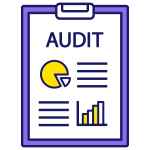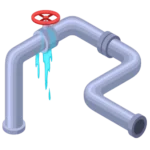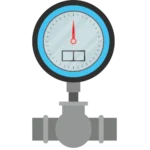Business Water Rates
Find out how much you can save on business water rates
Just enter your business postcode…
Find out how much you can save on business water rates
Just enter your business postcode…
Commercial water bills can be confusing, with rate calculations often stretching across multiple pages.
Our business water experts have prepared this guide to current water rates to help business owners understand how business water rates work and how to benefit from lower bills.
Here are the key sections of our guide:
Using published data from each regional default water supplier, here are the 2025/26 business water rates relating to the ten biggest water companies.
These water rates apply for water used by commercial properties from 1 April 2025 to 31 March 2026.
💡See below for a full breakdown of 2025/26 business water rates.
| Wholesale region | Default supplier | Water £/cubic meter | Wastewater £/cubic meter |
|---|---|---|---|
| United Utilities Water | Water Plus | 2.5086 | 1.9152 |
| Northumbrian Water | Wave Utilities | 1.6336 | 1.8797 |
| Yorkshire Water | Business Stream | 2.1796 | 2.7202 |
| Severn Trent Water | Water Plus | 2.7294 | 1.5702 |
| Anglian Water | Wave Utilities | 2.5227 | 2.3069 |
| Thames Water | Castle Water | 2.5895 | 1.7054 |
| Southern Water | Business Stream | 2.7702 | 3.9717 |
| Wessex Water | Water 2 Business | 3.0946 | 2.6713 |
| South West Water | Source for Business | 2.8392 | 4.8473 |
Over 80% of all English pay the needlessly expensive default water rates presented in the table above.
Find a cheaper fixed-rate contract with AquaSwitch. Compare commercial water rates currently offered in the market with our business water comparison service.
Scotland has a single company responsible for managing the water and sewerage network called Scottish Water.
Business Stream is Scotland’s default business water supplier. Here’s a summary of deemed water rates for small commercial properties from 1 April 2025.
| Water rates type | Default (Business Stream) | Scottish water wholesale |
|---|---|---|
| Water annual standing charge | £191.63 | £93.26 |
| Water - First 20 cubic meters | £2.8752 / Cubic meter | Nil cost |
| Water - Next 100 cubic meters | £1.0784 / Cubic meter | £1.7051 / Cubic meter |
| Water - All additional volumes | £1.0784 / Cubic meter | £0.9838 / Cubic meter |
| Wastewater annual standing charge | £185.08 | £65.76 |
| Wastewater - First 20 cubic meters | £3.2158 / Cubic meter | Nil cost |
| Wastewater - All additional volumes | £1.9338 / Cubic meter | £1.1269 / Cubic meter |
| Surface drainage | 4.896 p / £ RV | 4.0301 p / £ RV |
In Scotland, default business water rates are significantly higher than the fixed rates available on the market. Find out how much you can save with our comparison service.
Upon the deregulation of the water market, the commercial properties of small businesses were assigned a Supply Point ID and moved into the open water market.
These small companies pay the English and Scottish business water rates we have presented above, except for:
Yes, business water rates increased on 1 April 2025 by an average of 21%, which is significantly higher than the rate of inflation.
Water companies in the UK are under intense pressure to stop discharging sewage into rivers. The price rise is intended to fund investment in water infrastructure over the next five years to help address this issue.
Visit our business water rates increase page to find out how much water rates have increased in your area.
Businesses can save up to 20% on water costs by switching business water supplier. The amount your business can save depends on several key factors:
Use our business water rates comparison tool today to determine how much your business can save in the open water market.
Any business using one or more of the following services pays commercial water rates. Click on the links to understand how each element of business water rates works.
The potable water standing charge is a fixed daily fee charged, regardless of whether your business uses any water.
The fixed charge is applied to all properties with a business water connection to maintain the external pipes and pumping systems that supply water.
The size of the potable water standing charge depends on your business’s region and the size of the pipe that connects to your property.
The potable water rates depend on the amount of clean water supplied to your business property. Simply put, the more water your business uses, the more you will be charged.
The water meter at your property will measure the volume of clean water that passes through the pipe into your property. Your business water supplier will take regular readings from the water meter so that they can calculate how much to bill you.
On your business water bill, the volume of water your business uses is multiplied by a volumetric rate. The volumetric rate is the charge for each cubic meter of water used.
Wastewater is any water that leaves your property through the sewerage pipes.
The standing wastewater charge is another fixed daily charge levied to all properties regardless of whether the property produces any wastewater. The charge pays for the maintenance of the sewage system your property uses.
Like the potable water volumetric charge, businesses also pay for every cubic meter of wastewater flowing into the sewers.
Most water suppliers assume that all clean water supplied to your business premises eventually ends up in the wastewater system. The water company, therefore, uses the meter readings on the potable water pipes to determine the wastewater charges.
If your business uses a lot of water in its operations, it may mean that significantly less water returns to the sewers. If this is the case on your water bill, your supplier should apply a “return to sewerage” factor to reduce the volumetric wastewater rates.
If this isn’t happening, we recommend that your business conduct a water bill validation review to see if you can reclaim historical overcharging from your supplier.
Businesses are charged for removing rainwater that falls on their property and goes into the drainage system. It might seem unfair to pay for rainwater, but keeping the drainage system working well is crucial to prevent flooding and is an essential role of water companies.
How much you pay for surface water drainage depends on where your business is and how big your property is. Generally, the larger the property, the more you’ll pay for drainage.
If your business has a high surface water drainage charge, we recommend using our guide to the surface drainage charge to check you are being billed correctly.
Rainwater landing on public roads and footpaths also gets funnelled into the drainage system. Water suppliers charge highway drainage rates to cover the costs of maintaining the highway drainage network.
Everyone uses public roads, but the government chooses to pay for the drainage system maintenance through water bills. To keep this fair, a water supplier will charge an equal amount to each property in its region.
If a property is not connected to the sewers, it should not be charged a highway drainage charge.
Trade effluent is any liquid waste other than surface water and domestic sewage discharged by a business. An example is waste products from food production. The vast majority of companies do not produce trade effluent and will, therefore, not be charged for this.
Trade effluent charges are highly complex and dependent upon the nature of the effluent. Our comprehensive guide to trade effluent helps explain the subject.
Businesses can face a number of miscellaneous additional charges from their water network provider. The main categories of charge are as follows:
Most commercial properties have a water meter that measures the volume of mains potable water consumed over time.
A minority of properties don’t have a water meter, making it necessary for the business water supplier to estimate how much water is being used by a property. There are two different ways business water suppliers calculate business water rates without a meter:
Yes, businesses will pay water rates when they have any property connected to British water infrastructure. That can be any of the following (and typically all of them):
The business water rates your business pays depend on your region. See below for an example of a typical business water rates:
Business water rates are confusing, so let’s examine an example of how they are calculated. A small office in Blackpool uses 100 cubic meters of water each year (about the same as a small household).
From 1 April 2025, the regional default tariff business rates are calculated as follows:
Example: Annual business water rates for a single small office.
Water standing water charge – £84.27 (Based upon the standard water meter size of 15mm)
Volumetric water charge – £250.86, calculated by multiplying:
Wastewater standing charge – £56.52
Wastewater volumetric charge – £181.94, calculated by multiplying:
Surface water drainage – £133.41 (Based upon the size of a small office)
Highwater drainage charge – £57.18 (Based upon the size of a small office)
Total annual business water rates – £764.18
*The example above used property within the United Utilities wholesale area on the default regional tariff. How business water rates are charged depends on your property’s wholesale region.
Check out our business water rates calculator for an interactive demonstration of the above.
Rateable Value is one way that business water suppliers calculate unmeasured water rates. The primary use of Rateable Value is to determine the business rates that each commercial property will need to pay to the local council.
The rateable value can also be used to determine volumetric water and wastewater charges where a property does not have a water meter. In this case, water and wastewater will be charged at a specific unit price per £ rateable value.
Each wholesaler annually publishes how the Rateable Value determines the unmeasured water and wastewater rates.
The business water rates a property pays depend upon the following measured inputs that will be used to calculate the amount due in on your water bill:
In this section, our experts clarify common terminology used in the water rates section of business water bills.
Water tariff – The scheme used to calculate the standing and volumetric water rates based on the size of the water meter and the volume of water used.
Wastewater tariff – The scheme used to calculate the standing and volumetric wastewater rates based on the size of the water meter, the volume of water used and the return to sewerage allowance.
Highways drainage tariff – The scheme used to calculate the highways drainage charge for all properties in a region.
Surface drainage tariff – The scheme used to calculate the surface drainage charge for properties by estimating the area encompassed by a property.
Return to sewerage allowance – A ratio used by business water suppliers and wholesalers to estimate the amount of water returned to the sewerage system based upon the amount of potable water used by a property.
Unmeasured water tariff – A water tariff that estimates water consumption where no water meter is installed at a property.
SPID number – A unique identifier applied to each water and wastewater supply point that records the meter size, meter reads, water tariffs, and other information required to calculate business water rates accurately.
Banded charges – Where volumetric business water rates depend on the annual consumption used at a property. These are used to apply lower business water rates to high consumption properties.
Volumetric charges – Water rates that depend on the volume of water consumption at a property. Volumetric charges are quoted per cubic meter of water supplied or wastewater removed from a property.
Wholesale scheme of charges – A document published annually by each regional water and wastewater wholesaler sets out how wholesaler water rates and tariffs are calculated.
Default tariff scheme of charges – A document published annually by business water suppliers setting out how out-of-contract business water rates are calculated.
Maximum daily demand charge – An annual charge levied by a business water supplier to guarantee that a specified peak volume of water will always be available from the mains supply.
Cubic meter – A unit of volume of water used in business water rates. A cubic meter of water is equivalent to 1,000 litres.
Assessed charges – Where a business water supplier uses an estimate of annual consumption where there is no water meter at a commercial property.
Rising block water tariff – A structure for business water rates in which the cost of water increases as consumption rises.
Our business water experts summarise ten top steps small companies can take to reduce their business water rates.

The first step in reducing water bills is to conduct a water audit to understand how much water your business consumes and where it is used. A water audit will identify leaks, wastage, and inefficiencies on your property.

Leaks are one of the most common causes of water wastage in businesses. Fixing water leaks can significantly reduce water bills and save money. Companies can hire a plumber to identify and fix business water leaks or install a leak detection system.

Water-efficient devices like low-flow toilets, taps, and showerheads can significantly reduce water consumption. These devices use less water than traditional ones without sacrificing performance.

Businesses can collect and reuse rainwater for watering plants, cleaning, and flushing toilets. Alternatively, a greywater system can strategically reuse wastewater from appliances like washing machines.

Water management systems can help companies monitor and control their water usage using a series of water loggers. These systems can detect leaks, measure usage, identify areas of waste, and actively alert users to potential issues.

Employees play a crucial role in reducing water consumption. Educating employees about the importance of water conservation and providing them with tips on conserving water can help reduce your business’s water bills.

Replacing old appliances, such as dishwashers and washing machines, with modern, resource-efficient alternatives can save your business money on business electricity rates and commercial water rates.

A water-saving policy can help businesses set targets and goals for reducing water consumption. It can include employee guidelines, targets for reducing water consumption, and incentives for achieving these targets.

Monitoring and measuring water usage can help businesses identify where water is used and where it can be saved. Businesses can use smart water meters or sub-meters to measure water usage and identify areas of waste.

Compare business water rates to see how your current tariff stacks up against alternatives available in the open water market. Switching to a fixed-rate tariff could save your business thousands on water bills.
In this article, we’ve done our best to publish business water rates in a digestible format. The tables have been prepared by extracting publicly available water rate data.
Here’s an index of where to find your business water rates.
Here are the answers to frequently asked questions on business water prices.
Once a year. Business water rates change every year on the 1st of April. To view the latest business water rates in your area, you can review our tables above for English business water rates and Scottish business water rates.
Business water rates vary from region to region. The disparity arises because the cost of maintaining the regional water network is higher in certain parts of the country than in others.
As an example, there is less rain in the South West of England, and the region is sparsely populated. Hence, pipes need to travel long distances between reservoirs and properties, making water supply more expensive.
Each regional water network determines its own wholesaler charges. In Scotland, there is only a single wholesaler, Scottish Water. In England, the different regional water networks are:
Water and wastewater regional wholesalers:
Water only wholesalers:
The following rates relate to the 2025/26 standard default non-household tariff in each region:
| Wholesale region | Default supplier | Standing water (£) | Volumetric water (£/m³) | Standing wastewater (£) | Volumetric wastewater (£/m³) |
|---|---|---|---|---|---|
| Scottish water* | Business Stream | 191.63 | 1.0784 | £185.08 | 1.9338 |
| United Utilities | Water Plus | 84.27 | 2.5086 | 247.11 | 1.9152 |
| Northumbrian Water | Wave | 93.68 | 1.6336 | 223.23 | 1.8797 |
| Hartlepool Water | Wave | 77 | 1.541 | N/A | N/A |
| Yorkshire Water | Business Stream | 67.52 | 2.1796 | 142.38 | 2.7202 |
| Welsh Water | N/A | 39.43 | 1.8366 | 142.26 | 2.8212 |
| Severn Trent Water | Water Plus | 97.19 | 2.7294 | 102.2 | 1.5702 |
| Hafren Dyfrdwy | N/A | 40.97 | 2.3263 | 77.36 | 2.5962 |
| South Staffs Water | Source for Business | 100.74 | 1.6899 | N/A | N/A |
| Anglian Water | Wave | 77.1 | 2.5227 | 134.9 | 2.3069 |
| Essex and Suffolk | Wave | 93.68 | 2.059 | N/A | N/A |
| Cambridge Water | Source for Business | 100.74 | 1.3615 | N/A | N/A |
| Affinity Water (Central) | Castle Water | 89.37 | 1.4417 | N/A | N/A |
| Affinity Water (East) | Castle Water | 89.37 | 2.4036 | N/A | N/A |
| Affinity Water (South East) | Castle Water | 89.37 | 2.4036 | N/A | N/A |
| Thames Water | Castle Water | 67.52 | 2.5895 | 139.23 | 1.7054 |
| Bristol Water | Water 2 Business | 74.03 | 1.6906 | N/A | N/A |
| SES Water | SES Business Water | 68.86 | 1.3769 | N/A | N/A |
| South East Water (East) | Castle Water | 77.56 | 2.8903 | N/A | N/A |
| South East Water (West) | Castle Water | 77.56 | 2.1939 | N/A | N/A |
| Southern Water | Business Stream | 92.47 | 2.7702 | 120.68 | 3.9717 |
| Wessex Water | Water 2 Business | 72.76 | 3.0946 | 110.93 | 2.6713 |
| Portsmouth Water | Castle Water | 78.93 | 0.9119 | N/A | N/A |
| Bournemouth Water | Source for Business | 67.52 | 1.5032 | N/A | N/A |
| South West Water | Source for Business | 97.81 | 2.8392 | 94.91 | 4.8473 |
Some wholesalers use different pricing structures depending on your property’s location within each region. The table above displays a representative tariff for each wholesaler based on a single region.
Where applicable, the charges for the lowest banding of surface and highway drainage have been used.
The water rates paid by businesses in Britain depend both on region and the amount of water consumed. 1.2 million English and 0.3 million Scottish properties are registered on the non-household water network.
In 2025, the mean average non-household water rates bill is £2,700 per annum. These average business water rates have increased significantly following price changes in April.
The average figure encompasses millions of small businesses that use only a few cubic meters of water each and the largest industrial users, which spend millions yearly on water.
Most businesses do not pay VAT on water bills. The exception is industries that use large quantities of water as a direct input in their production, the biggest ones being:
Your business water supplier will automatically assess whether they need to charge your business VAT.
For our in-depth explainer, check out our guide to VAT on business water bills.
Generally speaking, domestic water rates are cheaper than business water rates because the average household uses less water than the average business. Domestic property water rates are calculated differently from business water rates.
Most homes do not have a water meter installed, so domestic water consumption is assessed rather than measured. Unless you specifically request a water meter for your house, a water supplier will charge your home a fixed cost regardless of how much water you use.
In contrast, most business properties pay water rates based on measurements taken by a water meter.
AquaSwitch completed a one-off study comparing a house and a small business property using the same amount of water. We found that, in this case, a business on the regional out-of-contract tariff will pay an average of 8.7% more than the household.
Yes. The water market for non-households is deregulated so businesses can switch suppliers to cheaper rates. Business water suppliers add a retail fee to the underlying wholesale water rates for customer services.
Ofwat carefully regulates water rates to avoid the excessive profitability of any of the companies involved in the supply of water and wastewater services.
Firstly the regional wholesale water rates are carefully controlled such a balance is maintained between:
Ofwat then further regulates the business water suppliers by providing an annual price cap which sets a maximum retail fee that can be charged to business customers.
For more information, check out our guide to everything you need to know about Ofwat.
Yes, the amount a business pays for water rates depends on where your property is located. England is divided into approximately 20 different wholesale regions, each of which has its own company owning and operating the water infrastructure.
The cost of maintaining the water network in each region is different so business rates also vary from region to region. See our handy guide here to the different regional water rates.
In most regions of England and Scotland, wholesale water companies offer large user tariffs for industrial customers. Large user tariffs generally levy a standing water charge in the tens of thousands but offer a lower volumetric water and wastewater rate than the standard tariffs.
The effect of large user tariffs is to provide a bulk-buy discount to those industries that use significant amounts of water in their production.
Business water rates are calculated on a volumetric basis; the more water a property uses, the higher the charges. Volumetric business water rates are measured in price per cubic meter. The following shows how much water properties are typically consumed:
However, some industries use a huge amount of water. Check out our blog post on which industries use the most water.